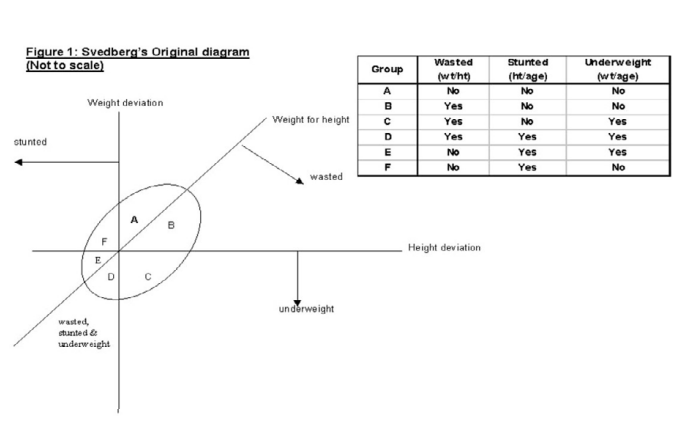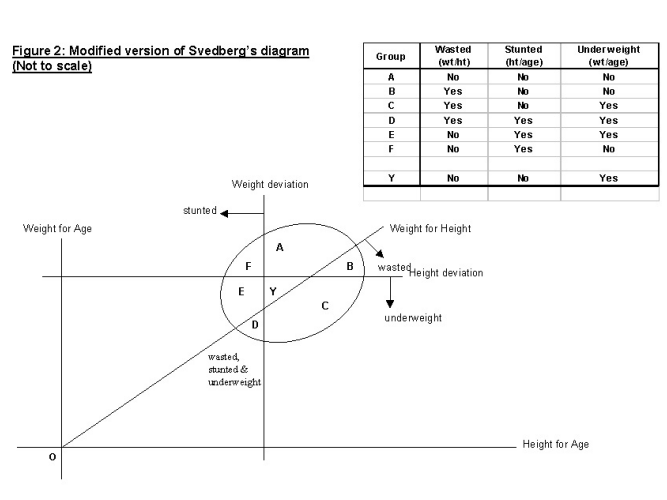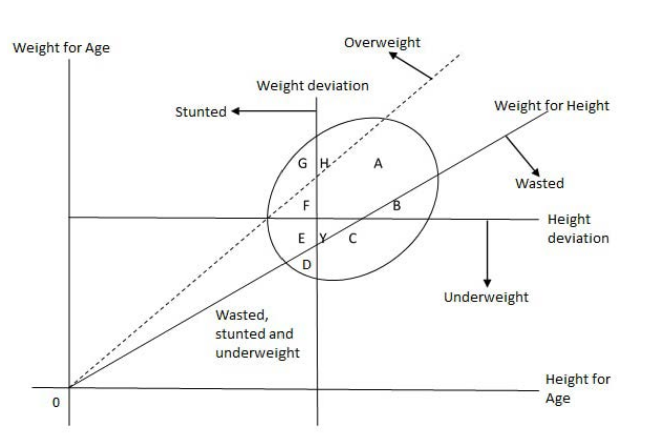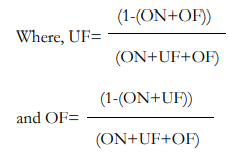1. Svedberg P. Poverty and Undernutrition: Theory, Measurement, and Policy. Oxford, England, UK: Oxford University Press. 2000. doi: 10.1093/0198292686.001.0001
2. World Health Organization(WHO). Physical status: The use and interpretation of anthropometry. World Health Organ Tech Rep Ser. 1995; 1-452.
3. Nandy S, Irving M, Gordon D, Subramanian SV, Smith GD. Poverty, child undernutrition and morbidity: New evidence from India. Bull World Health Organ. 2005; 83: 210-216. doi: S0042-96862005000300014
4. Nandy S, Miranda JJ. Overlooking undernutrition? Using a composite index of anthropometric failure to assess how underweight misses and misleads the assessment of undernutrition in young children. Soc Sci Med. 2008; 66: 1963-1966. doi: 10.1016/j.socscimed.2008.01.02
5. Cole TJ, Bellizzi MC, Flegal KM, Dirtz WH. Establishing a standard definition for child overweight and obesity worldwide: International survey. BMJ. 2000; 320: 1240-1243. doi: 10.1136/bmj.320.7244.1240
6. de Onis M, Garza C, Onyango AW, Borghi E. Comparison of the WHO child growth standards and the CDC 2000 growth charts. J Nutr. 2007; 137: 144-148. doi: 10.1093/jn/137.1.144
7. Steinberger J, Daniels SR. Obesity, insulin resistance, diabetes, and cardiovascular risk in children: An American heart association scientific statement from the atherosclerosis, hypertension, and obesity in the young committee (council on cardiovascular disease in the young) and the diabetes committee (council on nutrition, physical activity, and metabolism). Circulation. 2003; 107: 1448-1453. doi: 10.1161/01.CIR.0000060923.07573.F2
8. Freedman DS, Dietz WH, Srinivasan SR, Berenson GS. The relation of overweight to cardiovascular risk factors among children and adolescents: The bogalusa heart study. Pediatrics. 1999; 103: 1175-1182. doi: 10.1542/peds.103.6.1175
9. Lee WW. An overview of pediatric obesity. Pediatr Diabetes. 2007; 8: 76-87. doi: 10.1111/j.1399-5448.2007.00337.x
10. Reilly JJ, Kelly J. Long-term impact of overweight and obesity in childhood and adolescence on morbidity and premature mortality in adulthood: Systematic review. Int J of Obes. 2010; 35:891-898. doi: 10.1038/ijo.2010.222
11. Mathur P, Das MK, Arora NK. Non-alcoholic fatty liver disease and childhood obesity. Indian J Pediatr. 2007; 74: 401-407.
12. World Health Organization (WHO). Childhood overweight and obesity on the rise: Global Strategy on Diet, Physical Activity and Health. 2004.
13. Shrimpton R, Rokx C. The double burden of malnutrition: A review of Global Evidence. Health, Nutrition and Population (HNP) Discussion Paper. 2012. doi: 10.1596/27417
14. Gillespie SR, Haddad LJ. The Double Burden of Malnutrition in Asia: Causes, Consequences, and Solutions. New Delhi, India: Sage India. 2003.
15. Motlagh ME, Kelishadi R, Amirkhani MA, et al. Double burden of nutritional disorders in young Iranian children: findings of a nationwide screening survey. Pub Health Nutr. 2011; 14: 605-610. doi: 10.1017/S1368980010002399
16. Kimani-Murage EW, Kahn K, Pettifor JM, et al. The prevalence of stunting, overweight and obesity, and metabolic disease risk in rural South African children. BMC Pub Health. 2010; 10: 1-13. doi: 10.1186/1471-2458-10-158
17. Mondal N, Basumatary B, Kropi J, Bose K. Prevalence of double burden of malnutrition among urban school going Bodo children age in 5-11 years of Assam, Northeast India. Epidemiology Biostatistics and Public Health. 2015; 12: 11497-11510. doi: 10.2427/11497
18. Tzioumis E, Kay M, Bentley M E, Adir LS. Prevalence and trends in the childhood dual burden of malnutrition in low and middle-income countries, 1990–2012. Public Health Nutr. 2016; 19: 1375-1388. doi: 10.1017/S1368980016000276
19. Wang Y, Lobstein T. Worldwide trends in childhood overweight and obesity. Int J of Pediatr Obes. 2006; 1: 11-25. doi: 10.1080/17477160600586747
20. Pienaar AE. Prevalence of overweight and obesity among primary school children in a developing country: NW-CHILD longitudinal data of 6–9-yr-old children in South Africa. BMC Obes. 2015; 2:1-10. doi: 10.1186/s40608-014-0030-4











